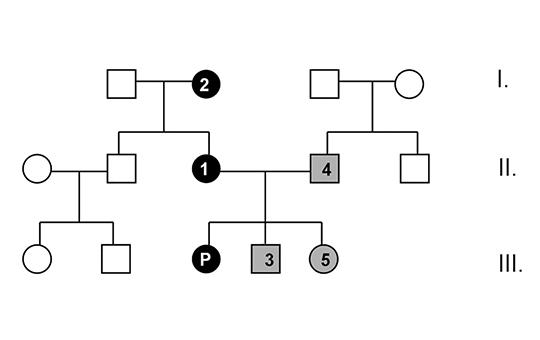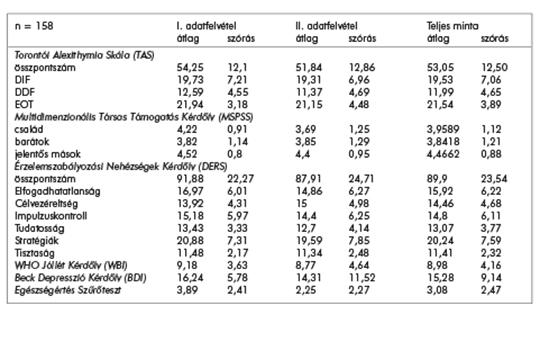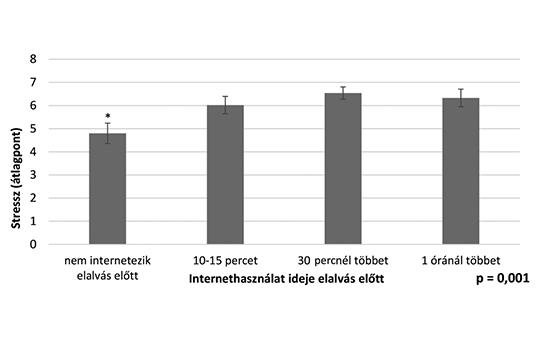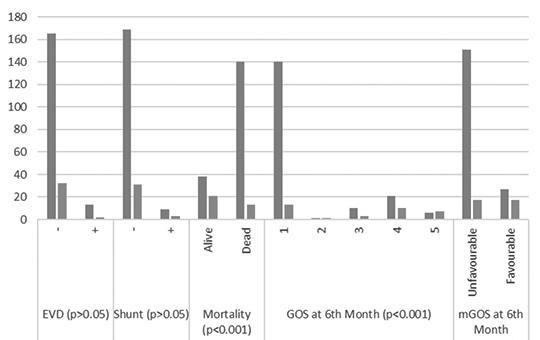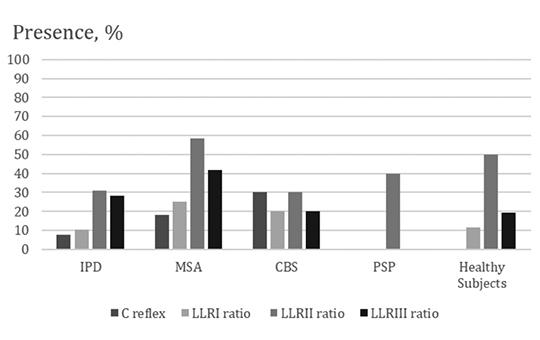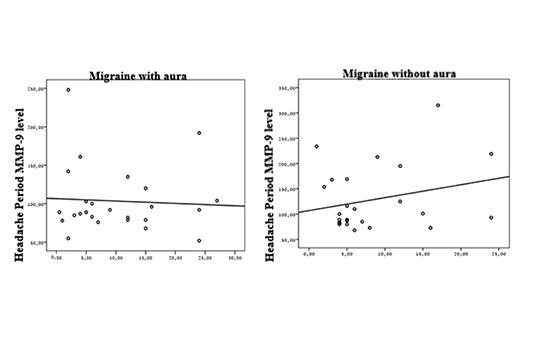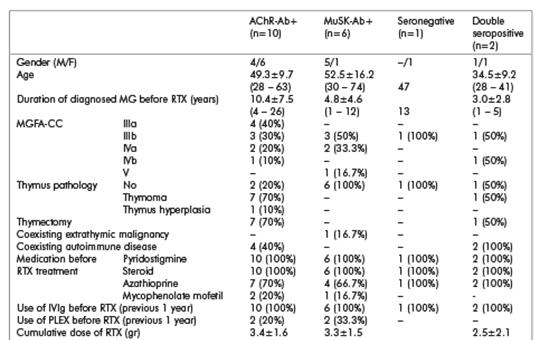The eLitMed.hu medical portal uses computer cookies for convenient operation. Detailed information can be found in the Cookie-policy.
Clinical Neuroscience - 2022;75(09-10)
Content
[EEG abnormalities indicating the genetic determination of epilepsies]
[Genetic and acquired factors contribute to epileptogenesis in all epilepsy syndromes and patients. A comprehensive evaluation of both components of etiology is essential in every patient. In this review, the authors enumerate the EEG abnormalities indicating the genetic determination of epilepsy. The authors briefly describe generalized spike-and-wave paroxysms, focal spikes and sharp waves, photosensitivity, 4–7 Hz theta rhythm, 2-4 Hz occipital intermittent rhythmic delta activity, phi rhythm, and generalized monomorphic alpha EEG background activity. For each abnormality, the authors review prior knowledge and add recent research results. The neurophysiological meaning of the abnormalities, age distribution, the relationship to epilepsy, the role of the EEG patterns in epileptogenesis, clinical presentation, and prognosis in the individual patient are the main aspects of description and discussion. These EEG abnormalities may shape the typical, syndrome-specific phenotype, forecast severity of the disease and difficulty of treatment or pharmacoresistance, and modify the syndrome-specific general prognosis of the syndrome. Relationship to epilepsy and heritability data of the EEG abnormalities can help to estimate the risk of epilepsy in the offspring. Epilepsy syndromes are taxonomic diagnostic categories that might be enriched with neurobiological meaning and heritability relations.]
[COVID-19 and chronic pain: online survey in the domestic population]
[The problems caused by the COVID-19 epidemic have the worst impact on chronic patient populations. People with chronic pain are one of the most vulnerable groups due to stress, disruption of daily routine, family problems, illness and difficulty in hospital care. It is therefore essential to assess the situation and mental well-being of this group. The aim of this survey was to assess chronic pain patients during the COVID-19 pandemic, addressing psychological background factors that might affect pain symptoms, such as depression, emotion regulation, alexithymia, well-being, health literacy and social support.
158 people participated in the survey, reporting pain for at least 3 months but had not received medical treatment. Data was collected at two dates: February and December 2021. Participants completed an online questionnaire due to the pandemic situation. The following six psychological questionnaires were used in the survey: Toronto Alexithymia Scale, Beck Depression Inventory 9-item version, Difficulty in Emotion Regulation Scale, Multidimensional Scale of Perceived Social Support, Chew-questions measuring health literacy, WHO Well-being Index.
The participants ranged from 20 to 80 years in age, of whom 140 (88%) were female. 42 participants (27%) achieved severe alexithymia. 118 people (75%) had depression, of which 72 people (46%) had mild depression, 26 (16%) had moderate depression, and 20 (13%) had severe depression. The degree of pain and alexithymia (r(158) = 0.16, p = 0.004), depression (r(158) = 0.41, p < 0.001), difficulties in emotion regulation (r(158) = 0.26, p = 0.004), and health literacy, and difficulties in emotion regulation (r(158) = 0.25, p = 0.001) were positively and significantly related.
In addition to the characteristic comorbidities of people living with pain (e.g. anxiety, emotion disorder, sleep disorder), the epidemic-induced prolonged social isolation, stress and fear of illness may explain the proportion of high depression, emotion regulation difficulties or health literacy problems in the study sample which exacerbate alexithymia and the degree of pain. Based on these results it is important to draw the attention of professionals to the appropriate health care and educational needs of those affected.]
[Adolescents’ sleep quality in the context of Internet use]
[Background and purpose – The present study is a continuation of our previous research, our aim is to assess the sleep quality of adolescents in light of Internet use. We conducted a cross-sectional, quantitative, descriptive questionnaire survey among students aged 12-18 in primary and secondary education (n = 308). A self-edited questionnaire, a scale of sleep hygiene rules, and the Athens Insomnia Scale were used. On the Athens Insomnia Scale, they scored an average of 5.39 (3.93) points, with 17% of adolescents considered insomniac. Students watch an average of 1.27 (1.04) hours of film a day, and 47% of them use the Internet for more than two hours a day. Excessive internet use (p < 0.001) and use of smart devices before falling asleep (p = 0.002) have a negative effect on sleep quality. Stress increases in parallel with Internet use (p = 0.001). Those who sleep better perform better in school (p = 0.034). Excessive use of smart devices is associated with higher stress levels and poorer sleep quality. Our goal is to draw the attention of parents and adolescents to the reduction of Internet use and the possible consequences of deteriorating sleep quality. ]
The effects of ultra-early clipping on survival and neurological outcome in poor-grade aneurysmal subarachnoid haemorrhage
European Stroke Organisation guidelines advise treating aneurysmal subarachnoid haemorrhage (aSAH) as early as possible. However, the optimum timing along with its beneficial effects is controversial. Therefore, we aimed to investigate the effects of ultra-early clipping on neurological outcomes and survival in poor-grade aneurysmal subarachnoid haemorrhages.
This retrospective study included all poor-grade aneurysmal subarachnoid haemorrhage patients treated by ultra-early surgical clipping at Trakya University Hospital between January 1, 2001, and December 31, 2020. We analysed the outcome and mortality data of these patients. Specifically, we evaluated the effects of ultra-early clipping on outcomes, defined as within six hours of the onset of symptoms.
From 813 records, 212 met our inclusion criteria. Of these, 117 (55.2%) were female and 95 (44.8%) male. The mean age was 58.3 ± 13.7 years. Glasgow Outcome Scale scores differed significantly between age groups, subarachnoid haemorrhage grades, those who did and did not rebleed, and those who did or did not suffer from vasospasms. A beneficiary relationship was found between ultra-early clipping and mortality among patients. Furthermore, favourable outcomes were significantly more frequent in the ultra-early clipping group.
The aSAH patients treated at our hospital who received ultra-early clipping had significantly lower mortality rates and more favourable outcomes. The difference was significant among those treated during the last decade and among patients younger than 50.
Comparison of long-latency reflex and mixed nerve silent period responses in various hypokinetic movement disorders
Long-latency reflex and mixed nerve silent period responses are electrophysiological methods to study the sensorimotor functions of the central nervous system. Here we aimed to study long-latency reflexes and mixed nerve silent period responses in different types of hypokinetic movement disorders in order to find an electrophysiological landmark to distinguish them.
We included 39 patients with idiopathic Parkinson’s disease (IPD), 12 patients with multiple system atrophy (MSA), 10 patients with corticobasal syndrome (CBS), 5 patients with progressive supranuclear palsy (PSP) and 26 healthy participants. We recorded the segmental reflex, the long-latency reflexes and the mixed nerve silent period responses for each participant.
C reflex, long-latency reflex-I and long-latency reflex-III responses were not obtained in any patients with PSP. Long-latency reflex amplitude/ F amplitude ratio was significantly lower in patients with IPD and PSP compared to healthy individuals (p=0.036, p=0.006 respectively). The mixed nerve silent period end latencies were significantly longer in IPD, MSA, CBS groups compared to the healthy individuals (p=0.026, p=0.050, p=0.008 respectively).
We suggest that recording long-latency reflex, particularly C reflex responses may provide promising results in distinction of CBS and MSA from PSP. Prospective studies with clinical findings and brainstem reflexes may offer more information.
Assessment of serum MMP-9, TIMP-1 levels and MMP-9/TIMP-1 ratio in migraine patients with and without aura
Matrix metalloproteinases (MMP) are the enzymes responsible for proteolytic activity of extracellular matrix proteins. Tissue inhibitors of metalloproteinases (TIMPs) are their endogenous inhibitors. MMP-9 acts on the basal membrane of cerebellar epithelium and is antagonized by TIMP-1. MMP-9/TIMP-1 ratio exhibits the net activity of MMP-9. These enzymes are thought to have a role in migraine physiopathogenesis.
Total of 50 treatment-naive migraine patients (25 with aura and 25 without aura) with no other diseases, were included. 25 healthy control subjects of corresponding age and gender were enrolled. For MMP-9 and TIMP-1 analysis, one serum sample from control group and two samples from patients were collected (during headache and headache-free periods). The enzyme levels were quantitatively analyzed by competitive ELISA method. Duration and severity of the pain and duration of the disease were recorded.
There was no significant difference in MMP-9 levels between patient and control groups during headache and headache-free periods (p: 0,746, p: 0,243). TIMP-1 levels were significantly lower and MMP-9/TIMP ratios were higher comparing with the control group (p: 0.001). Positive correlation was obtained between the duration of pain and MMP-9 levels in the headache-free period for both patient groups (p<0.05). There was also a positive correlation between MMP-9/TIMP-1 ratio and severity of pain (p<0.05).
In our study, low TIMP-1 levels of patients in both headache and headache-free periods suggest that disturbance of proteolytic protection has a role in neuro-inflammation and pain in migraine. Therefore, these enzymes could be potential targets in migraine therapies.
Effects of rituximab on prognosis in myasthenia gravis: A single-center experience from Turkey
Management of treatment-resistant patients with myasthenia gravis (MG) remains an important issue. This study aimed to evaluate the effects of rituximab (RTX) treatment on the prognosis of patients with acetylcholine receptor autoantibody-positive (AChR-Ab+), muscle-specific kinase autoantibody-positive (MuSK-Ab+), or seronegative or double seropositive MG.
Nineteen patients treated with RTX between 2015 and 2020 were included in this study. Demographic and clinical characteristics, prognosis, and prognostic predictors of MG were evaluated retrospectively. The Myasthenia Gravis Foundation of America Post-Intervention Status (MGFA-PIS) before RTX treatment (pre-RTX) and after RTX treatment (post-RTX) were recorded.
A total of 10 patients (52.6%) were AchR Ab+, 6 patients (31.6%) were MuSK Ab+, 1 patient (5.3%) was seronegative, and 2 patients (10.5%) were double seropositive. Steroid dose was pre-RTX 38.9±5.7 (25-45), it was post-RTX 10.5±10.3 (0-30) (p<0.001). Post-RTX steroid treatment was discontinued in 6 of 19 patients (p=0.041). Only three patients received intravenous immunoglobulin at the post-RTX follow-up (p<0.001). In post-RTX 12th month, the MGFA-PIS score was as minimally manifestation or better in 9 patients (47.3%) and improved or was better in 18 patients (94.7%) (p-value 0.004; <0.001, respectively).
The improvement in MGFA-PIS scores post-RTX was similar in MuSK-Ab+ and AChR-Ab+ patients. The data are insufficient in seronegative and double seropositive patients and RTX must be considered in the treatment of suitable patients with MuSK-Ab+ and AChR-Ab+ refractory MG.
1.
Clinical Neuroscience
Is there any difference in mortality rates of atrial fibrillation detected before or after ischemic stroke?2.
Clinical Neuroscience
Factors influencing the level of stigma in Parkinson’s disease in western Turkey3.
Clinical Neuroscience
Neuropathic pain and mood disorders in earthquake survivors with peripheral nerve injuries4.
Journal of Nursing Theory and Practice
[Correlations of Sarcopenia, Frailty, Falls and Social Isolation – A Literature Review in the Light of Swedish Statistics]5.
Clinical Neuroscience
[Comparison of pain intensity measurements among patients with low-back pain]1.
2.
Clinical Neuroscience Proceedings
[A Magyar Stroke Társaság XVIII. Kongresszusa és a Magyar Neuroszonológiai Társaság XV. Konferenciája. Absztraktfüzet]3.
4.
Journal of Nursing Theory and Practice
[A selection of the entries submitted to the literary contest "Honorable mission: the joys and challenges of our profession" ]5.
Journal of Nursing Theory and Practice
[End of Life and Palliative Care of Newborns in the Nursing Context]